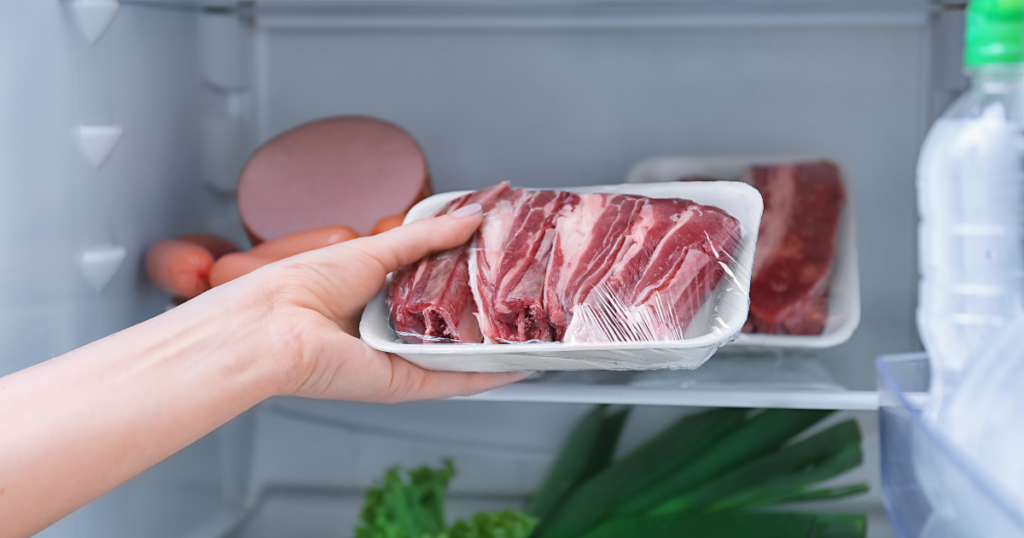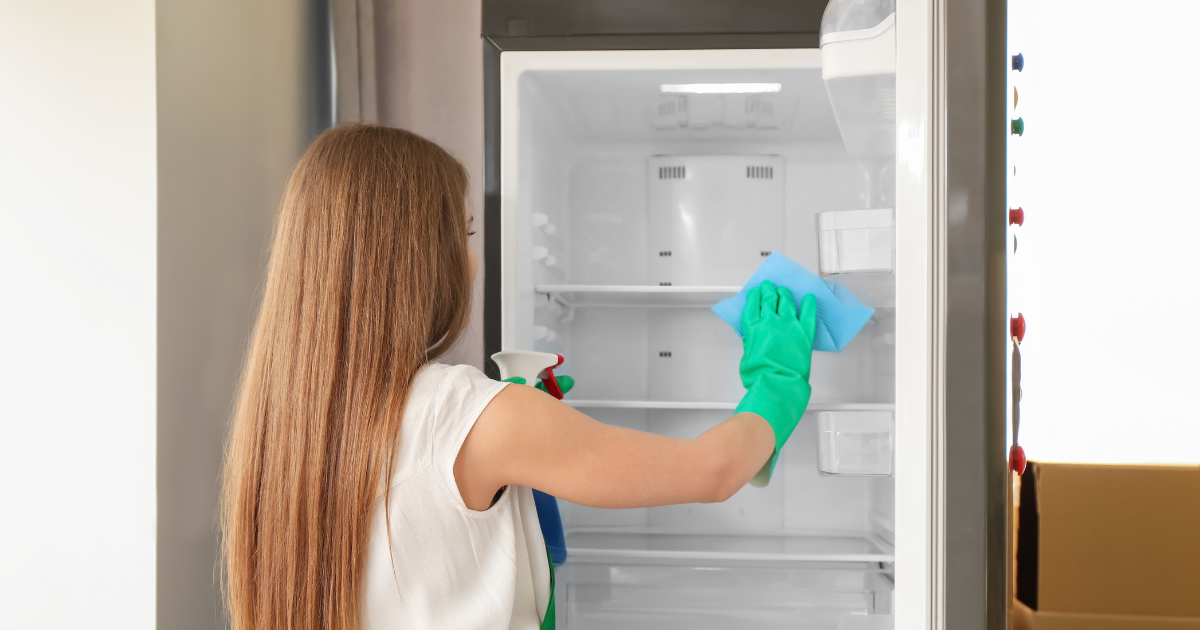Refrigerators are good for keeping frozen foods cold and ready when you want them. However, most frozen foods are perishable. They aren’t meant to last forever, and they can spoil if they are not used or are forgotten in the freezer.
Freezer burn and mold can accumulate on the inside of your refrigerator or freezer if they are not cleaned. Ice can also form on the freezer walls if the temperature setting is too cold for an extended period. All of this can harm the foods inside the unit and can cause damage to the appliance itself. If cleaned quickly, you can save food products and even extend your freezer’s working life.
Here are a few ways that you can be proactive to stop mold from growing in your freezer:
1. Place a box of baking soda in your fridge

Putting a box of baking soda in your fridge can help remove unpleasant food odors. Just open a box and put one in the freezer and one in the fridge. Any bad smells should dissipate in a matter of days. Just keep in mind that baking soda can lose its effectiveness after several months, so be sure to change it out every two to three months to help keep your freezer smelling fresh! Alternatively, you can use a refrigerator odor absorber which will last much longer.
2. Use containers that are sealed tightly
Any containers with food in your refrigerator should be sealed tightly to prevent air from escaping to avoid freezer burn and/or mold. Glass bowls and containers can be used for meat, poultry, fish and vegetables. If you have any open boxes, either make sure they are closed all the way or place the contents in a resealable plastic bag. Any plastic bags that you store in your freezer or refrigerator should have as much air removed from them as possible to keep foods fresh.
3. Use your meats quickly!

Beef, chicken, and fish can start accumulating mold spores and odors in a matter of days. For best results, use any meat products soon after buying them. The longer you leave them in your fridge, the better chances are that potentially harmful bacteria can form on them.
4. Inspect contents in the fridge regularly
Set aside time once every week or every two weeks to look over the contents inside your fridge. Start by going all the way in the back to find items that you may have overlooked for a while and work your way to the front. If it’s been in the fridge for a long time, it’s time to throw it away! Look at the food inside your refrigerator closely for any signs of mold or spoilage. This could contaminate the other foods around them if they’re left there for too long.
5. Clean out your refrigerator and freezer once a season
A good rule of thumb is to clean out your refrigerator and freezer at least once every 3-4 months, or once a season. Completely empty it and put anything that is still good in a cooler. Take the time to thoroughly clean the inside and outside and empty all compartments of the refrigerator and freezer, to eliminate as many potential germs as possible. Once everything’s been cleaned and dried carefully, then you can start putting things back in their proper places.
6. Know what things should not be stored in your fridge
The following foods are just some items that should not be kept in a refrigerator:
- Bread should be kept on the counter or in a separate bin or drawer. Bread can accumulate mold quickly if not used on a regular basis.
- Cucumbers tend to decay and rot faster in a fridge. They can be left out at room temperature.
- Donuts can become stale and soggy quickly if left in a refrigerator. It’s better to leave them out on the counter and keep them covered. Just keep in mind that their shelf life is usually only a few days.
- Potatoes are better left in the pantry. Being in a refrigerator can turn their nutrient starches into sugar after a while.
- Garlic should be kept either in a ventilated container or your pantry. It can start to mold if left in a refrigerator or freezer. Giving garlic room to breathe can help it last for months.
- Coffee and coffee beans should never be left in a refrigerator or freezer. It can be too humid for them and cause the coffee to become flavorless.
- Honey can crystallize if placed in a refrigerator for too long. This can leave you with a syrupy mess that is hard to use and even harder to clean. Place any honey containers in a kitchen cabinet or on a counter, anywhere that it’s not exposed to any extreme heat or cold.
- Peanut butter is also best left at room temperature. It can dry up and become hard if stored in a freezer or refrigerator.
- Molasses should not be kept in a refrigerator, due to its viscous property. It can also freeze solid and be challenging to use if stored anywhere cold.
These are just some ways to prevent mold from forming in your refrigerator. There are other steps you can take, such as writing down the purchase date for any foods that you store. This can help you determine whether or not a product may still be edible when it’s time to clean your freezer or fridge. Many of these ideas are very practical and don’t take a lot of time out of your day. If you have a newer refrigerator, there’s a good chance that your fridge has an air filtration system built in. If your fridge has one of these systems, you’ll want to regularly replace the air filter.
You can add ‘cleaning your fridge’ to your calendar or use an app to remind you. People can get very ill from eating food that has spoiled or been infested with mold, so take some precautions to make sure the food that you and your family eat is as healthy as it can be! While you’re at it, you can stock up on all of your fridge filter needs by choosing ClearChoice fridge water filters.
Other Frequently Asked Questions
Is mold in the fridge common?
Mold growth in refrigerators is common. The cool, damp conditions inside the fridge create an ideal environment for mold to thrive, especially with foods that have high moisture content and have been left for extended periods. Regular cleaning is essential to ward off mold growth and ensure the freshness of your food.
Will an unplugged fridge grow mold inside?
Absolutely, an unplugged fridge can definitely accumulate mold inside. While the fridge is not running, moisture seeps into every corner. This, along with any leftover moisture from spilled food or residue, provides an environment for mold to grow.
Is black mold in the fridge toxic?
Black mold is a type of mold that does pose a risk to human health. Black mold produces mycotoxins, which are toxic compounds that can be harmful to those who breathe or touch the spores. It may cause health issues such as nausea, vomiting, headaches, skin rashes, and more.
Will vinegar kill mold permanently?
Research has shown that vinegar is effective at destroying mold at its roots and preventing regrowth. However, it’s not a one-size-fits-all solution that eliminates every type of mold. Its effectiveness depends on the specific type you’re dealing with. Fortunately, vinegar is indeed effective at destroying black mold.

